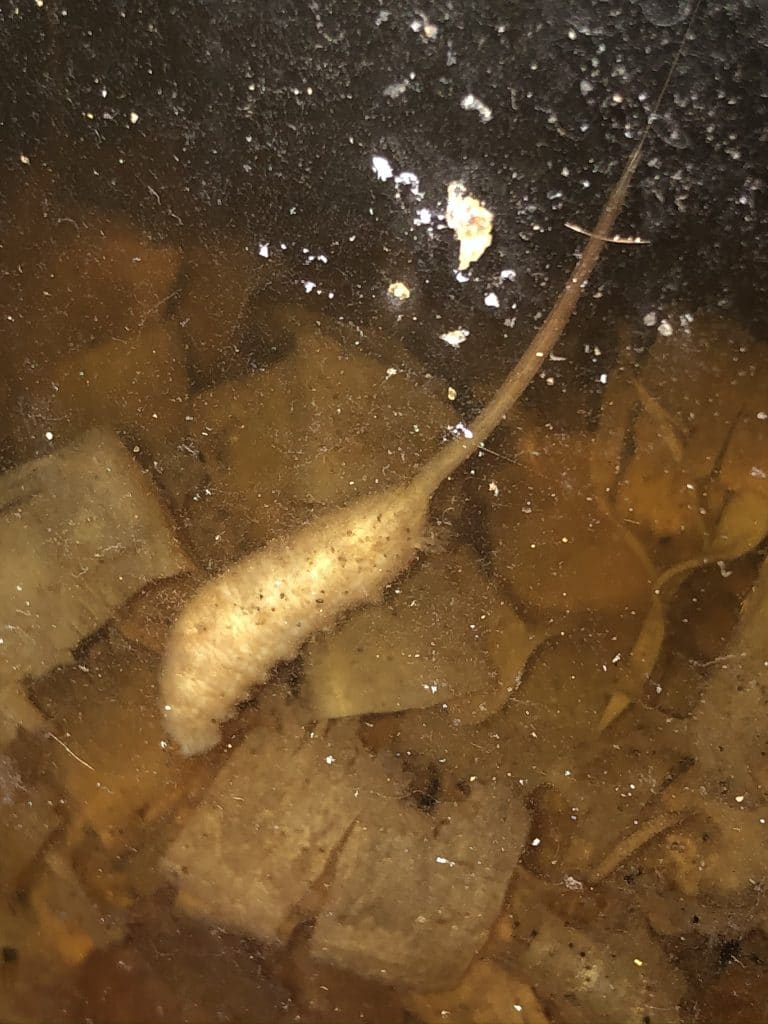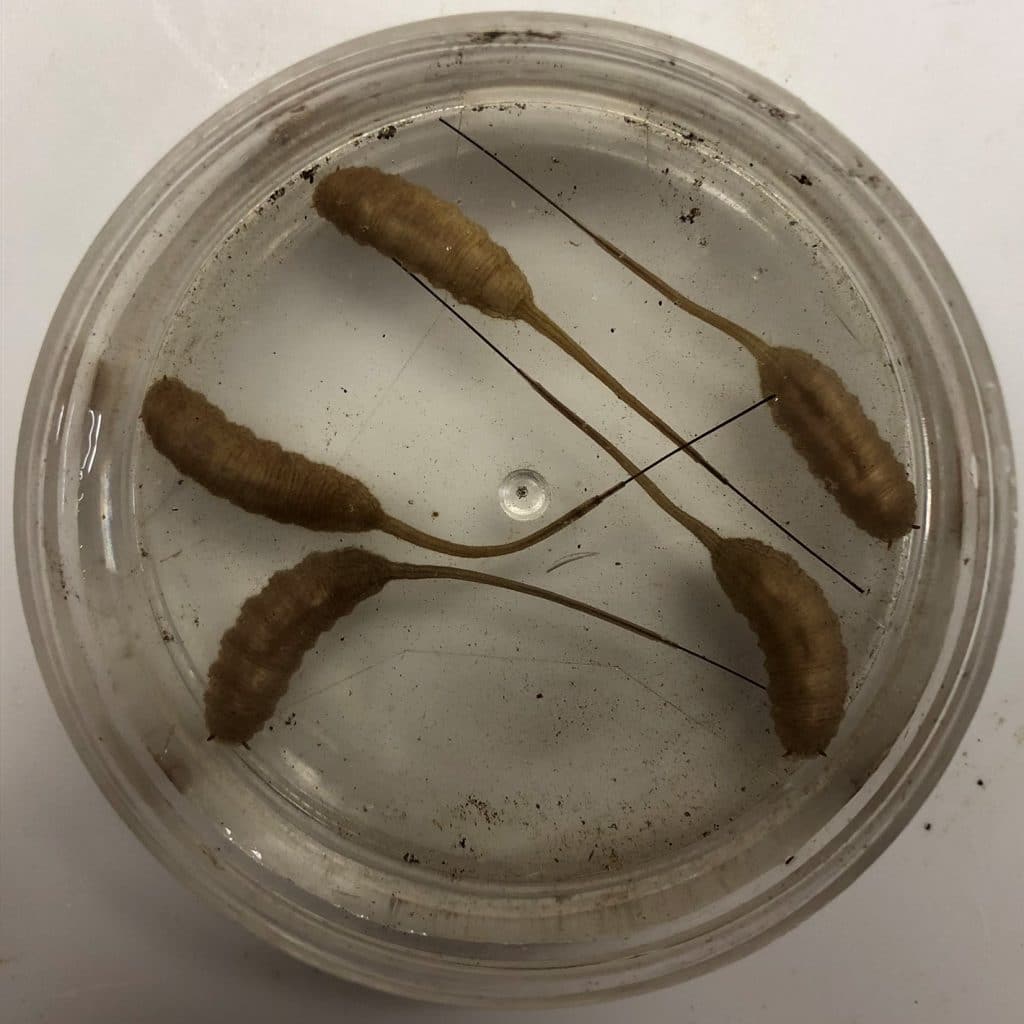Yes, this is a shout out to a maggot. But not just any maggot, but one that when you see it, makes you say “Hey, what’s with that!” This is also a story about what creatures like these do in the world and how we should show them some respect for their lot in life.
Now, for the maggot novice among you (most of you, I suppose) immature flies or maggots all breath from their “back ends” through a pair of holes known as spiracles. Spiracles regulate the flow of air into and out of the pair of internal respiratory tubes or trachea that take up as much as two-thirds of the length of the maggot. For many species, spiracles are just two holes at the end of the insect.
For species living in water, like many mosquitoes and rat-tailed maggots, the spiracles are located at the ends of elongated tails that allow them to make a direct connection to the atmosphere. Stiff hairs around the spiracles act to break the surface tension of the water so that the spiracles stay open to the atmosphere, and the maggot can breathe. Mosquitoes appear to “hang” down from the water surface. These hairs also prevent water from entering the tubes when maggots submerge, when disturbed.

Now that you have said “ew”, let me speak for my friend the rat-tailed maggot. As with many insects that feed on decaying matter, they play an important role in processing the muckier elements of our world, otherwise, we would be up to our armpits in it! But what is not as yucky about rat-tailed maggots and their relatives are the adults, known as flower flies. Many resemble bees and even buzz to embellish the effect. They are quite beautiful and visit your garden in the summer and fall.
Not everyone gets to see a rat-tailed maggot, so I am happy that my friend Erin Kirk spotted them in the muck in a neglected aquarium on her porch. It was a treat to see them again and certainly a teaching moment for you all.
You are all quite welcomed!
Hope to see you in our great outdoors!




